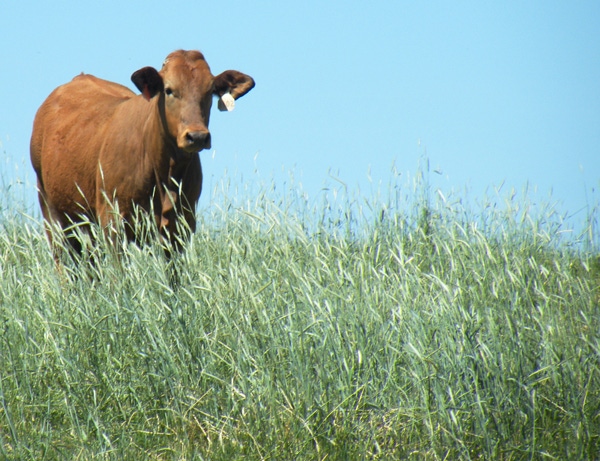January 14, 2011

Let it snow, let it snow, let it snow. Unfortunately, even with a recent dusting of fluffy white flakes, it remains extremely dry in most of the winter wheat grazing areas of the southern Great Plains.
Dry conditions last fall made it difficult to establish wheat pasture in many areas and limited growth for winter grazing, leading to a number of current beef producer and industry concerns.
With high feeder prices and limited feeder supplies, there is a lot of interest in how many wheat pasture cattle are out this winter, especially relative to the timing of those cattle into the market, said Derrell Peel, Oklahoma State University Cooperative Extension livestock marketing specialist.
“Wheat pasture conditions vary considerably in different regions, making it difficult to develop an overall assessment,” he said. “Most wheat pasture was planted late and developed late, delaying placement of wheat pasture cattle.”
High wheat prices may have limited grazing interest somewhat but attractive wheat grazing prospects remained much of the fall. However, emerging dry conditions curtailed grazing prospects prior to Christmas so the overall window for placing wheat pasture cattle was fairly narrow.
Given those situations, Peel believes that the number of cattle on wheat is probably no greater than it was last year and may be somewhat less.
“I traveled some over the holiday season and noticed a wide range of wheat pasture conditions at the time,” he said. “Most notable were several sets of cattle grazing extremely short or limited wheat. Those cattle will have to move very soon to other pasture or be marketed.”
The cold weather currently in place has shut down or at least severely limited plant growth, depending on the exact location of a producer’s operation.
“Given that the amount of wheat pasture available is quite limited and cattle prices are attractive and may go higher still, producers will want to minimize risk to grain yield,” Peel said.
There seems to be little incentive to hold onto cattle, particularly if forage is short. Peel said he would not be surprised to begin seeing wheat pasture cattle trickling into the market in the coming weeks. However, he does not expect to see any sizable bunching of cattle or a noticeable “run” of any size going into early March.
You May Also Like




